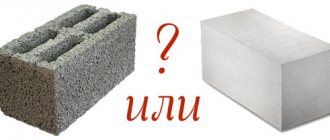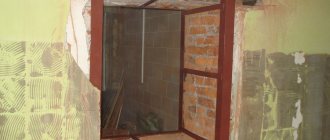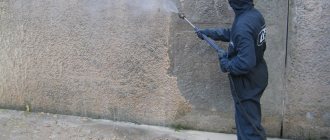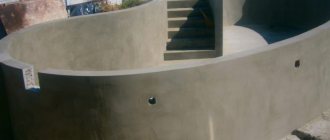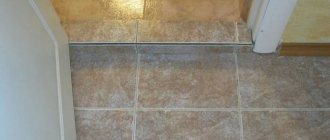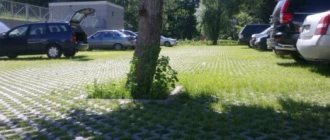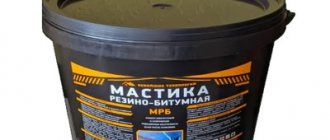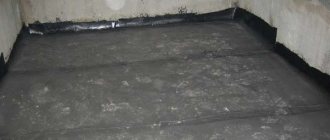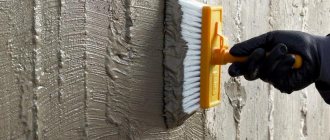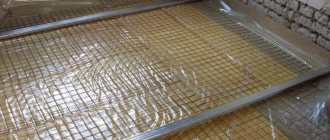Waterproofing concrete can be implemented at the construction stage of the building or during operation. In practice, maximum efficiency can be achieved using an integrated approach.
Reinforced concrete products can be processed using the following materials:
- sheet and roll coverings (geosynthetics or PVC membranes);
- liquid compositions – bitumen mastics, liquid rubber;
- sheet metal (metal-based materials are not used for waterproofing the floor);
- mixtures based on bentonite clay;
- mineral-based binders;
- penetrating mixtures;
- Waterproofing concrete is used for surface treatment of reinforced concrete structures.
Waterproofing concrete joints can be implemented:
- at the joints of walls and foundation slabs of a house, floor slabs, lintels, etc. (with materials like “Dehydrol”). To waterproof the joints of concrete slabs, grooves of 20x20 mm/30x30 mm are installed. Material consumption 0.8 kg/m.p of concrete;
- on prefabricated reinforced concrete structures. Recently, special sealing tape has been used to waterproof joints. The material is fixed on the surface of the structure in the abutment zone, after which it acquires waterproof properties;
- joints of balcony slabs, various canopies and walls, other external seams, including foundation ones, are best treated with coating waterproofing.
Insulation of floors must be carried out using penetrating materials. The slabs are processed from below or from the outside . In technical rooms it is better to use rolled materials or bitumen mastic.
Type of foundation waterproofing
Two main types of insulation are used - vertical and horizontal waterproofing of the foundation; both methods are not always used in construction.
For horizontal processing, only materials intended for this purpose are used, mainly weld-on or self-adhesive rolls. Vertical includes coating, screen, internal, external waterproofing.
There are several options to protect the foundation from water penetration:
- Coating is the most common method that gives a good long-lasting effect and is easy to do with your own hands;
- Penetrating method – cutting off excess moisture using new technology. The principle is that after treatment, concrete, when interacting with water, is covered with a protective layer and crystallizes, closing the most microscopic pores;
- Roll processing. It is not durable, but it is a very convenient and quick way to create a barrier to water penetration. Rolled or coating materials are used for work.
It is worth understanding that waterproofing the foundation slab begins only after the concrete has completely dried.
Roll processing today uses materials such as stekloizol, rubemast. It gives the structure good strength and is convenient to use under a slab. It is laid on a sand and gravel cushion; no additional screed is needed. Each joint is glued with bitumen mastic; for this you will need a burner. Strips of material are driven 10-15 cm upward over the entire area of the base of the house. Do not skip the side seams of the foundation.
The foundation is waterproofed with bitumen mastics by cutting off the water. The mixture is applied to the slab with paint brushes, rollers or spray. The complexity of this option lies in the concrete screed, which is made on a cement pad, after which a layer of mastic is applied. The sides and top are processed last.
Just as in the previous case, the rolled material in penetrating insulation is laid on a concrete screed. Once the slab is poured, a layer of waterproofing is applied to the top and side walls. It works as follows: a reaction occurs between the lime contained in the concrete and the active chemical elements in the waterproofing material. As a result, all the smallest pores become clogged for a long time. This method is the most effective.
Preparation for waterproofing
During the construction of a slab foundation, it is imperative to waterproof the joints between the elements. The seams are sealed with durable concrete, but it quickly absorbs moisture, so it is sealed with special polyurethane cords, coating treatment and sealants. Waterproofing under the foundation slab is also mandatory; it is done with liquid rubber.
How to make a hydraulic seal?
Titovite Member of FORUMHOUSE
Given: reinforced concrete M350 basement wall 30 cm thick. Apart from the basement with the ceiling, nothing was built. Waterproofing done. In the fall, at a level of -1.70 from the planning ground level, a leak occurred along a threaded rod (they remained in the concrete and served as a tie for sheets of plywood formwork). Most likely, rainwater is flowing under the waterproofing from above. When there is a house, this problem should disappear. I'm thinking about how to fix the leak now.
Thoughts like this:
- Hollow out the concrete in a circle around the stud to a depth of 10 cm.
- Cut off the stud by welding.
- Dust off and prime the resulting “crater”.
- Apply a hydraulic seal.
But the question is what to make it from. I think from a mixture of Portland cement, tile adhesive and liquid glass to the desired thickness. But maybe there are other proven recipes that are more effective?
Answer from a GLIMS expert.
— Your thoughts on the work execution system are correct, but may be temporary. Let's go in order:
- Hollowing out concrete to a depth of 10 cm is overkill; 3 cm (30 mm) is enough.
- Cut off the pin.
- Dust off and prime - in your case, priming is not only not necessary, but is more harmful than useful. Since you have M350 concrete, it is a high-strength concrete with a low degree of absorption. If you also prime it, you will further reduce absorbency. It is enough to saturate the concrete base with water and it will be better than priming.
- You don’t need to invent a hydraulic seal yourself - we did it many years ago. Our cement water seal is perfect for you - just for eliminating direct water leaks and sealing holes. You can even work underwater!
Question about waterproofing (waterproofing) that is done on the foundation - if water flows along the stud, it means that the external waterproofing has already been damaged. Having sealed one stud and blocking the ability of water to pass through, without solving the problem, the water will look for another place to exit and perhaps it will be a neighboring stud.
To check the quality of waterproofing on the foundation, block the access to rainwater from above. For example, cover your foundation with a durable film around the perimeter so that water cannot only flow in from above. In this way, we will understand where the water comes from - rain or groundwater.
Waterproofing concrete joints
The most likely places for water leaks in structures made of waterproof concrete are expansion joints, junctions of vertical and horizontal structures, joints between prefabricated structural elements, and utility entries.
Expansion (temperature, sedimentation, anti-seismic and shrinkage) joints dividing the building into compartments are installed in the right places in the load-bearing and enclosing structures to prevent the appearance of random, unorganized cracks.
Technological (cold, working, structural) seams are made where the day's work on laying concrete has been completed.
Interruptions in concreting during the construction of structures, separate casting of the horizontal part and then the vertical part, or laying concrete on metal, stone, etc., for example, when concreting embedded parts and utility inputs, lead to the formation of so-called “cold joints.”
Cold joints in cast-in-place concrete structures are among the weak points in underground building structures and are the most common cause of water penetration.
Joints between prefabricated structural elements
Quite often, reinforced concrete blocks are used to build foundations or basements. In this case, the problem area is the joints between them.
The joints between structural elements are sealed using fine-grained cement-sand mortars. However, this creates cold (technological) seams, which in turn represent a potential place for water leakage.
To reduce the likelihood of leaks and increase the strength characteristics of butt joints, in recent times non-shrinking or slightly expanding dry cement-based building mixtures (see section “ Waterproofing mixtures” ) with high compressive strength (25-45 MPa) and water resistance ( W12-W16). However, it is advisable to additionally waterproof the butt joints formed using such mixtures with penetrating (penetrating) mineral compounds.
Pressure joints
Waterproofing of joints (when one reinforced concrete structural element is placed on another) is provided immediately before installation of concrete structures on concrete preparation.
To do this, it is recommended to apply a layer of mortar or dry powder of a penetrating cement-salt composition, a non-shrinking or expanding cement-based mortar onto the joint plane.
Strengthening waterproofing
In practice, it has been proven that strengthening flexible coating waterproofing along joints, abutments, mates and cold seams using reinforcing strips made of glass fiber materials (fiberglass, fiberglass) or geotextiles (density 100-150 g/m2) is an effective solution.
The use of reinforcing (strengthening) material ensures the distribution of tensile loads occurring in the waterproofing coating onto areas of the coating adjacent to the stressed zone and thereby preserves its integrity at the point of the load.
Materials for sealing seams
To seal the technological seam, the contact surface is coated with a penetrating material or a swelling cord (profile) is laid, which is also used to seal gaps.
Sealing of movable expansion joints is achieved by laying expansion joints (waterstops) made of rubber and various types of PVC.
Sealing seams: 1 – swelling cord; 2 – coating with penetrating material; 3 – waterstop
Injection with acrylate gels and polyurethane resins
The technology for injecting concrete and reinforced concrete structures allows you to introduce insulating materials inside the body of the floor slab or create an insulating layer behind its outer surface between the wall and the surface layer. Filling expansion joints, voids, cracks, and even concrete capillaries by injection with polyurethane resins and acrylate gels allows you to create a continuous monolithic barrier to the flow of water, as well as protect the room from negative manifestations of dampness, such as mold and mildew.
Technical documentation
Waterproofing expansion joint
Waterproofing expansion joint
Waterproofing expansion joint
Technical regulations when carrying out work on the construction of expansion joints Technical regulations when carrying out work to eliminate zones of moisture filtration through cold joints Appendix 1 Price structure for technological seams Appendix 2 Price structure for expansion joints
Waterproofing materials
The following products are used for waterproofing:
- bitumen roll (roofing felt, roofing felt, stekloizol). They are cheap, but their service life is about 8 years, with the exception of glass insulation - lasts up to 20 years;
- mastic mixtures made on an adhesive basis. Service life 10 years;
- dry and liquid mixtures, last from a year to ten;
- made of foamed polyethylene and polypropylene, depending on the manufacturer, lasts from 25 to 50 years.
In order for polyethylene foam insulation to serve its intended life, a plastic composition of mastic or plaster is applied on top of it to protect it from ultraviolet radiation.
Types of waterproofing
Based on the method of protecting concrete structures, a distinction is made between surface and penetrating waterproofing. Surface waterproofing, for example, coating or roll, is subject to constant dynamic loads due to water pressure. Over time, the protective layer peels off from the surface of the reinforced concrete structure, and moisture seeps into the gaps.
Penetrating waterproofing using the injection method is considered a more effective technology. Injection is the injection of active substances through holes drilled in concrete or masonry. Due to its low viscosity, the solution spreads through the pores throughout the entire volume of the treated area. The substance increases in volume, fills the cavities of the monolithic structure, and reliably blocks the access of water.
The advantages of the injection method of waterproofing include
- formation of a strong protective frame;
- all work is carried out from the inside;
- adhesion of materials to any, including wet, substrates;
- lack of excavation work;
- long period of exposure - some substances do not lose their beneficial properties for 100 years or more.
Injection technology is used on the most complex objects - in subway tunnels, concrete tanks, swimming pools, and hydraulic structures. The injective method has no restrictions and is used on reinforced concrete structures of any size.
Selection of materials for sealing joints
Correctly selected material is half the success in high-quality sealing and waterproofing of the joint.
What should you pay attention to?
Firstly, the material used must be recommended for sealing joints by the manufacturer .
Secondly, the material used must have appropriate technical quality indicators for each of the tasks solved when sealing the joint . This requirement is mandatory and enshrined in SP 28.13330.2017 “Protection of building structures from corrosion” (updated edition of SNiP 2.03.11-85).
At the same time, in practice there are significant nuances.
Very often, the description of a material is replete with various “advantages” that are not supported by relevant regulatory technical indicators. It gets to the point that some manufacturers, who do not want to bear any responsibility to the consumer for the result of using their material, sometimes do not provide technical quality indicators at all for the effect of using the material. As a rule, only indicators describing the appearance and internal properties of the material are indicated.
Let’s ask a simple question: if the “advantages” of the material are such that the manufacturer himself does not believe in them, since he is not ready to confirm them with digital technical indicators of the effect of using the material, then why should you believe these “advantages”? Moreover, in this case, the use of such material contradicts the requirements of SP 28.13330.2017 “Protection of building structures from corrosion.”
If any advantage is important, then you should make sure that this advantage is so real that, first of all, the manufacturer himself is ready to confirm it with a technical quality indicator for the material. The presence of technical indicators confirming the declared properties of the material is a strictly enforced standard for all responsible manufacturers whose materials comply with the requirements of SP 28.13330.2017 “Protection of building structures from corrosion.”
How to find valid technical quality indicators for a material?
Very simple! In the description of the material, we look for the “Technical Indicators” table, and before purchasing, we request a quality certificate for the material, signed and certified by the manufacturer, and look at what is indicated there. So, if the description of the advantages states that the material is non-shrinking and has good adhesion to concrete, then the table of technical indicators must contain digital values (!) for each of these indicators , for example:
Caution should be exercised in cases where the necessary technical indicators are expressed not in numerical values, but in evaluative categories: “yes - no”, “racks - not racks”, because this can be misleading about the actual properties and capabilities of the material.
Regarding the material for sealing the joint, the following technical quality indicators are important for it, depending on the expected operating conditions:
- waterproof (W) – for waterproofing joints;
- increasing the water resistance grade of concrete with the supply of water from the reverse side treated with material and removing a layer of material (from grade to grade or increasing by the number of grades) - to block and eliminate moisture filtration inside the concrete joint and eliminate dampness;
- frost resistance (F) – to prevent freezing of the applied material;
- compressive strength and especially bending strength - to prevent cracking of the applied material from compressive and deforming external stresses characteristic of joints;
- limited minimum shrinkage (non-shrinkage) - to prevent cracking of the applied material from shrinkage stresses (and the appearance of wedging (fracture) stresses due to expansion of the material is not permissible for all joints);
- adhesion of the material to concrete – for a hermetically sealed connection and to prevent separation of the material from the concrete;
- adhesion of material to metal (reinforcement) - for a hermetically sealed connection and to prevent delamination of the material from the protected metal reinforcement, embedded parts and other metal structural elements at the joint;
- adhesion of material to plastic – for a hermetically sealed connection and to prevent the material from detaching from plastic pipes and cables when waterproofing utility inputs;
- coefficients of protective action in relation to steel reinforcement for the material itself and for concrete treated with the material - for the protection of metal reinforcement, embedded parts and other metal structural elements in bare form and under a layer of old concrete that has lost its protective properties, which is clearly manifested by the release of “rust” » to the surface;
- coefficients of corrosion resistance to sulfates for the material itself and concrete treated with the material - to prevent salt corrosion of the applied material and concrete treated with the material (at the site, this type of corrosion occurs from exposure to air moisture coupled with atmospheric pollution, from de-icing reagents, as well as water flowing from the surrounding area and filtering through the soil, dissolving various salts along the way);
- thermal conductivity coefficient - for the formation of “warm” non-freezing joints...
Accordingly, to seal the joint use:
- Dehydrol lux grade 5 “Repair and penetrating waterproofing” - when the joint comes into contact with water and aggressive media, when filtering from inside the concrete in the joint, when exposed to frost;
- Dehydrol grade 2P “Repair coarse” - when exposed to aggressive environments in the absence or elimination of filtration from inside the concrete;
- Dehydrol Lux grade 8 “Cementing waterproofing with penetrating effect” - when eliminating pressure leaks from joints;
- Dehydrol lux brand 7 “Elastic repair and joint waterproofing with penetrating effect” - for waterproofing joints with movements or joints with heterogeneous materials, for example, concrete-plastic, metal-plastic joints at utility inlets;
- Dehydrol Lux grade 4 “Plastering and repair thermal waterproofing with penetrating effect” - for thermal waterproofing of interpanel joints of residential and other buildings.
The materials can be used when sealing joints either individually or together.
So, the material has been selected according to the required quality indicators. You can start sealing the joint.
Waterproofing methods
The joints are sealed from the inside and outside. External waterproofing protection must be carried out during the construction of the structure. The moment of performing internal protection depends on the purpose of the structure. The need for internal protection arises if the external seal is significantly damaged. This leads to a decrease in the effectiveness of external sealing and entails a labor-intensive restoration process.
Popular waterproofing technologies involve the use of the following means:
- swelling tapes and cords;
- elastic polyvinyl chloride tapes;
- waterproofing seals;
- penetrating solutions;
- sealants;
- mastic;
- bitumen backfills;
- injection solutions.
The selection of technology is carried out at the time of project development. As a result of the measures taken, the ability to withstand operational impacts for a long time is strengthened. In this case, the tightness of the seam is the main point.
Stages of waterproofing joints at the construction stage of buildings:
- installation of waterstops made of elastic material with high adhesion to concrete surfaces;
- laying swelling cords;
- layer-by-layer backfill of fine-grained crushed stone using bitumen filling.
Conclusion
By choosing the optimal type of waterproofing at the construction stage and installing it correctly, you can really avoid problems in the future. If the need arises, to protect structures there are a lot of modern waterproofing materials characterized by a high degree of reliability.
On the topic, you can familiarize yourself with the experience of portal participants in finishing wet rooms in wooden houses. And if you want something unusual, try moisture-resistant plaster Tadelakt. The video shows an unusual sink for a wooden house.
Subscribe to our Telegram channelExclusive posts every week
Why do you need waterproofing of concrete floor slabs?
There can be many reasons for dampness:
- poor seams;
- low quality of cement used in the installation process;
- worsening weather conditions;
- for floors at the base of a building - capillary moistening of the structure with moisture from the soil.
Protection of slabs and seams between them can be done both during the construction of the house and during its operation. But the most reliable option is waterproofing concrete floor slabs at the construction stage.
There are many methods of protective treatment of slabs of such structures, but only a few of them are most often used.
Types of putties for sealing outside and inside
much attention is paid to external putty , since the following depends on its condition:
- microclimate and heat preservation in the room;
- resistance of slabs to unexpected seismic events;
- no deformation of load-bearing walls and protection from water, insects, and temperature changes.
For sealing in apartment buildings they use:
- cement mortar;
- mastic;
- sealants;
- polyurethane foam used simultaneously with the sealant.
Each type of embedded material must be several times larger than the slot space , but should not extend beyond the wall structure. Therefore, it is laid in an even layer and trimmed with a spatula. The frozen expanded remains of the polyurethane foam are trimmed using a construction knife.
Mastic
This type of material is a plastic viscous mass, which is produced on the basis of natural substances with added fillers - resins, rubber, plasticizers, etc.
The industrial product is available in several varieties; it can be one-component or two-component. The polymer base of the mastic is characterized by good adhesion to various surfaces and has sufficient elasticity.
The most popular manufacturers of the material are companies:
- CJSC "RASTRO" (St. Petersburg);
- LLC TPK "MasticIzol" (Moscow);
- “The latest technologies” (Novosibirsk).
The material has a long shelf life - up to 15 years, and is easy to work with. Mastic can be bitumen or polyurethane.
Based on the quality of hardening, it is divided into quickly hardening and non-hardening (for lubricating door and window openings and mechanisms).
Fast-hardening mastic is more suitable for seams. An important quality of the product is its water-repellent properties.
Each type is further divided into different types. For example, popular bitumen mastic is divided into rubber, polymer, emulsion and purely basic types. There is also cold and warm mastic, which is heated at the time of application. The polyurethane type is available in a lighter color than bitumen.
The mastic is sealed after thoroughly cleaning the surface and treating the seam with a primer solution, as well as fungicidal additives. Also, the mastic composition is used in a complex of layers for sealing - it is applied last so that it hardens and provides protection from the effects of water.
Sealant
The material is produced in a ready-made composition, in hermetically sealed packaging, and comes in :
- one-component;
- two-component.
Various types of sealants are especially good for expansion joints, and also as one of the layers of the “Warm Seam” method, the technology of which is based on the use of acrylic as well as polyurethane components.
Sealants can take the form of convenient cylinders or come in the form of “pistols” with a cone-shaped nozzle from which a certain amount of product is applied. But they can also be sold in buckets of 1-2 kg, from which they can be removed with a spatula and applied with a brush.
How to waterproof a swimming pool with insulation?
Buyan77FORUMHOUSE Member
A question arose about waterproofing the pool: there is a concrete bowl, I will insulate both the walls and the floor with extruded polystyrene foam. Attach to walls using polyurethane glue. Next, I’m thinking of using a plastic mesh for the putty and waterproofing it over it. The question is, which is better? You can use a cement water stop, or you can use mastic. Afterwards I want to glue the mosaic. I don't want to overpay. Or is it still worth it?
Answer from a GLIMS expert.
-If I understand correctly, the insulation is planned to be carried out inside the pool bowl, in which case the pie of materials will be as follows.
In this system there are no questions about what and how to do, there are more questions about EPS (extruded polystyrene foam).
- To glue EPS, you need to use specialized glue and apply it to the EPS board not with cakes, but over the entire surface of the board, with a notched trowel with a tooth height of 12 mm. In this way, we will avoid voids under the EPS slab, which will have a positive effect on the distribution of the load from water pressure on the EPS, and the entire system, including waterproofing and mosaic.
- After 24 hours, the glued EPS boards must be additionally secured to the base with plastic mushrooms with a plastic core.
- To create an adhesive layer on EPS boards, it is necessary to apply a special reinforcing putty with a fiberglass mesh in two layers. When choosing a grid, you must be guided by the following criteria:
- The density of the fiberglass mesh is at least 150 g/m².
- Alkali-resistant.
- Cell – 5×5 mm.
Technology - apply the first layer of putty, 2-3 mm thick, and place a mesh in it, immediately smooth out the putty protruding through the cells, so that the mesh is completely covered with putty (the mesh is not visible). When laying the mesh, ensure that the sheets overlap – at least 100 mm. Leave to dry for 24 hours. After 24 hours, we begin applying the second layer of putty with a thickness of at least 2-3 mm. Thus, we obtain a thickness of putty in two layers of 4-6 mm. Between layers of putty we do not prime, but simply moisten with water. Let it dry for three days.
- Now you can start applying waterproofing - since the base is not the most stable (EPS insulation), then the choice of waterproofing should be directed to elastic waterproofing. The best option would be “rubber” on a water-polymer basis, ready for use, with a consumption of 0.8-1.0 kg/m² in two layers and an elasticity of more than 300%. Drying time for waterproofing is 1 day from the moment the last layer is applied.
- Tile adhesive for laying mosaics is a waterproof white adhesive mixture. This adhesive was developed according to European standards for use in swimming pools and fountains.
- 24 hours after finishing laying the mosaic, you can start grouting the joints. Waterproof grout is recommended for use in swimming pools and fountains.
Now the main question is the choice of EPS insulation! This material must have approval from the manufacturer for use in swimming pools, in systems of this kind as described above. Accordingly, EPS must withstand loads (not change its geometry) from water pressure.
Waterproofing walls in an apartment
If you notice that moisture is appearing on the walls of your apartment, you shouldn’t blame it all on the poor waterproofing. In fact, a similar phenomenon can occur, for example, in corner rooms or rooms adjacent to the landing.
The cause of humidification is the condensation of warm air vapor inside the apartment on a cold section of the stove. In order for the walls to stop “crying”, you will have to restore or improve the insulation of your home.
If the walls get wet due to a violation of the waterproofing of the seams between concrete slabs, the seam will have to be repaired not only inside the room, but also outside the building. If the apartment is located on a high floor, it will not be possible to carry out external work yourself.
They must be carried out by workers of special construction organizations, who climb to the problem area of the facade in a special cradle, open the seam and seal it.
You can only seal the joints between the wall and the ceiling indoors on your own by gluing the seam in an accessible place with some kind of sealant. To do this, you can use Guerlain tape sealant made from synthetic rubber.
This material is successfully used for sealing joints, roofing seams and when installing windows. You can also use “Abris” SL-T butyl rubber tape with a width of 50, 70, 100 mm, which can be double-sided, metallized, etc.
Before you start insulating the walls, you need to find out whether leakage occurs at the joints (seams) of the slabs or whether the entire wall gets wet due to the presence of microcracks. In the first case, the joints should be treated, and in the second, the entire walls.
Walls covered with microcracks should be treated with one of the penetrating waterproofing compounds, which will increase the performance characteristics of concrete. It is also possible to carry out internal coating waterproofing of the wall with a composition based on cement, polymer-cement or polymer.
Among the materials that allow for external work, we recommend the organosilicon water repellent "Aquastop-K", which is used to increase the moisture resistance of brick, slate, concrete and aerated concrete, stone, gypsum and other materials that absorb moisture.
This waterproofing material not only increases the moisture resistance of the walls, but also retains at least 95% of the original vapor permeability and practically does not change their appearance, which is very important when repairing facades. Aquastop-K is usually not used for interior work.
Water-based hydrophobic liquids GSK-1 and solvent-based GSK-2 are widely used. The latter can be used even at an air temperature of -5 C.
Also suitable for waterproofing walls is the elastic polymer-cement waterproofing dry mixture “Ceresit CR166” made in Germany. It can be used for interior and exterior work on concrete, brick and other permeable materials.
This material forms a common crystal lattice with the base, eliminating the possibility of peeling, and thereby significantly increases the service life of the walls.
For plastering waterproofing of walls, the Kalmatron-Economy material is used. It is applied to the surface of concrete, brick, cinder block and other building structures. Thanks to this material, the waterproofness of the walls is restored, it also gives them strength and frost resistance. The technology for using this composition is quite simple and accessible.
How can I cover cracks and joints?
The choice of material for panel walls is best left to professionals. Each type of slab has its own sealing agent .
For example, SIP and sandwich panels are perfectly combined with ready-made sealant compositions (polyurethane, acrylic).
Monolithic slabs are sealed with cement mortar based on strong grades of Portland cement (M500 and higher), as well as a second layer of bitumen mastic, which provides additional waterproofing.
In addition, to seal the seams along with the compounds, special construction cords with a polyethylene base, which are considered insulation, are also placed in degreasing.
Thermal insulation tapes, represented by cords and tubes, retain mastic and other mixtures in the seams, additionally strengthen the space between the tiles, and eliminate cold bridges.
It is best to purchase sealing materials in specialized stores, including on websites from trusted manufacturers.
The product must:
- have a date of manufacture;
- established storage period and conditions;
- quality certificate;
- trademark according to the nomenclature of the Russian Federation;
- instructions for use and warranty.
The packaging must provide a detailed description and composition of the substance . The industrial product itself must be hermetically packaged.
There are many different types of sealants available on the construction market. The most popular are mastic, silicone compounds, and polyurethane foam. All these products combine well with any materials and are selected according to the width of the seams.
For example, for wide joints it is best to use expanding compounds; for deep recesses, polyurethane foam is more suitable. But sometimes the composition is individually selected for certain types of panels.
When choosing the material required for sealing, much attention is paid to its ductility. It is this quality that is one of the main qualitative characteristics, which allows the substance to be evenly distributed throughout the crack and fill the existing surface pores.
Recommendations for materials for waterproofing joints
Work on waterproofing seams is aimed at reducing the loss of thermal energy and protecting premises for various purposes from noise, dust, drafts, as well as from slow but sure destruction.
Such work can be carried out in new buildings and in already used buildings and premises.
Innovative compounds that are used for waterproofing work are made on the basis of foamed polyolefin and polyethylene and can last up to 50 years.
Waterproofing materials
- mastic mixtures, which are produced on an adhesive basis, with a service life of 10 years;
- bitumen-roofing felt materials are affordable in price, but have a short service life, about 8 years (roofing felt, glass, roofing felt), the exception in this series is glass insulation, which can last up to 20 years;
- materials based on foamed polyethylene and polyolefin with a service life of 25 to 50 years, depending on the manufacturer of the composition;
- waterproofing mixtures are dry and liquid , which last from one year to ten years.
